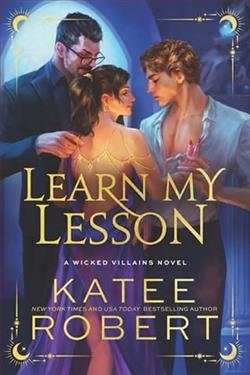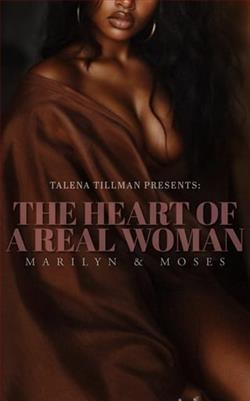Page 24 of Badlands
She looked up. “Why her?”
“She’s a dead ringer for your reconstruction. More than the others.”
“Maybe so,” interrupted Bellamy, “but you’ve got to take forensic reconstructions with a grain of salt.”
Saying nothing, Corrie pulled out the file on number ten. Martha Jane Markey, thirty-nine, high school social studies teacher, Corrales. BA in anthropology, New Mexico State University; single; disappeared five years ago. “And why her?”
“Anthro major, teaches social studies, single… but primarily because her parents were dead, and she had no siblings—which means no one to push for a thorough investigation into her disappearance. If you look at the file, you’ll see the investigation was cursory. And she had a drug problem. Arrested for opioid possession.”
Corrie looked at the bio and saw that her parents had died in a car crash when she was eighteen. She scanned the rest of the folder, but found nothing further to sink her teeth into. No smoking gun—but she couldn’t afford to ignore it. “Lookspromising,” she said to O’Hara. “Worth following up in the field.”
She glanced at Bellamy. He looked eager to say something.
“And you, Agent Bellamy? Thoughts?”
“Number one,” he said.
She pulled it out. Molly D. Vine, forty, high school science teacher. MA in anthropology, UNM; lived in Tesuque; disappeared five years ago. “And your reasons?”
“Look at page three.”
She flipped to the page and gave the short bio it contained a cursory scan. “What about it?”
“She was headed for a PhD in anthropology, then dropped out suddenly. Why? And compare her picture to your reconstruction.”
This, from the guy who’d just expressed dubiousness for such forensic work. Corrie compared the two and was unimpressed. “Number one has brown eyes. And of all the pictures, she looks theleastlike the reconstruction.”
“So?” said Bellamy, a challenging tone in his voice. “Your own report said only seventy percent of natural blonds have blue eyes. That leaves thirty percent with a different color.”
Corrie, irritated, nevertheless had to concede the point.
“And the chin’s the same. Funny-looking, pointed, like in your reconstruction. None of the others have that chin.That’sthe facial detail I’m focusing on.”
Corrie gritted her teeth but said nothing.
“Now, take another gander at the bio. It shows instability in her life—and not just the sudden abandonment of her degree. Her father left home when she was two. He gets remarried, drops out of her life totally. That must’ve hurt. And look—married at twenty, divorced at twenty-one? That’s a red flag.She’s a science teacher, but she moved schools three times in nine years and changed her habitation four times. Restless? Unhappy? I mean, if we’re looking for somebody likely to just call it quits, walk off into the desert, take off all her clothes, and fry from heatstroke—she’s my choice.”
Once again, Corrie had to admit that, despite Bellamy’s annoying bluster, the agent was making a certain amount of sense. She flipped back to Vine’s bio and read it more carefully. Vine may have dropped out of the PhD program, but she did get her MA in anthropology, and later a teaching certificate. Corrie read more carefully this time, curious to see the subject of her MA thesis at UNM. And there it was, staring her in the face: “The Late Chacoan Cultural Phase in Northern New Mexico.”
She stiffened: Was this the smoking gun she was looking for? The Gallina culture was late Chacoan.
“So,” said Bellamy, in a self-satisfied tone, tapping his finger obnoxiously on the file, “number one here, this Molly D. Vine, is your victim. I’m sure of it.”
She looked up at him, amazed to find that Bellamy wasn’t such a dolt after all—and realized she’d just learned a valuable lesson about never making assumptions of another agent’s work just because they were a douchebag.
“Agent Bellamy,” she said, “I believe you’re right.”
14
SO, HAVE YOUdiscovered the lost manuscript ofGötterdämmerungyet?” asked Mike Finch with his usual good humor, looking up as Nora entered the Institute’s soundproofed studio.
“No, but I’ve got a puzzle for you.”
The Institute’s small recording studio had recently been updated with a thirty-two-track digital mixer, a high-end mic cabinet, and new pro audio software and hardware. It had been made possible by the $100 million endowment—and the advisory position that came with it—given to the Institute by Nora’s boyfriend, Lucas Tappan. The timing of the studio upgrade turned out to be perfect: Nora had been poking around in one of the older storage areas, looking for a conquistador sword that had allegedly been unearthed a century before. Instead of the sword, she came across something far more precious: an old wooden cabinet, its drawers stuffed with cardboard boxes containing orange-colored cylinders wrapped in paper. They were wax cylinder recordings—the original method of recording sound—dating back to the 1890s. An early ethnologist at the Institute named Morrisby had made them, and the collectionincluded songs of Pueblo, Zuni, and Hopi Indians. They were in pristine condition, the cylinders having been played rarely, if ever, before being forgotten in storage.
It was a phenomenal discovery, and no one was happier about it than Mike Finch, the Institute’s part-time audio engineer.
Nora, too, was fascinated. She’d grown up playing the oboe and flute, and supervising the curation process would allow her to combine her love of music with anthropology. Most of the cylinders were documented in a logbook found in the cabinet, where Morrisby had written down when and where they were recorded and what the recordings were supposed to mean. There were harvest songs, kachina chants, healing ceremonials, deer songs, marriage songs, and much more—a treasure trove of Native American music. Some involved singing or chanting, others drumming, while a few contained melodies played on Native American flutes. It was an amazing and deeply moving experience to listen to these ancient songs from beyond the grave—music and voices that otherwise would have been lost to time.















